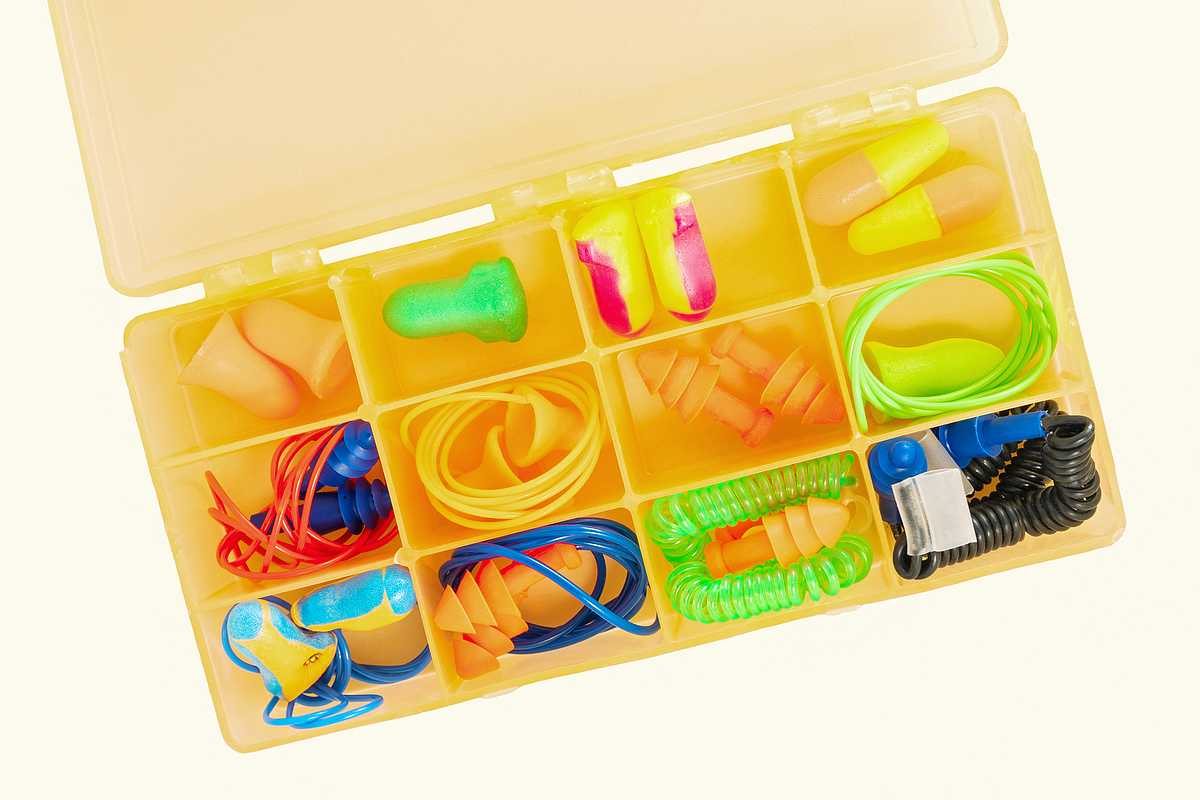According to the WHO's World Hearing Report, at least 1.5 billion people worldwide suffer from hearing loss. This number could be 5 billion by 2050, with occupational noise being one of the culprits. Protection against occupational noise hazards has become an important issue in modern production.
Protection against occupational noise hazards
Sound is formed and propagated in this way: sound is produced by the vibration of an object, propagated through the medium (air or solid, liquid). It can be collected and processed by the human or animal hearing organs, and finally in the cerebral cortex hearing center to form the sense of hearing.
Controlling production noise is theoretically only a matter of controlling the noise source, i.e., preventing impact, reducing friction, maintaining balance, and removing vibration ......
But in practice, it is difficult to fully realize these measures. The impact of punching machines and the air flow of fans are common sources of noise in production, and the only way to control these noises is to stagnate the operation of these machines. Due to technical limitations and cost constraints, most manufacturers will only switch to low-noise machinery and equipment.Trying to completely eliminate noise in production is almost impossible to accomplish.

Wear earplugs, ear care and ear protection of low-cost tricks
It's hard to make noise disappear completely, but it's easy to protect against noise hazards.
In the production site,noise control is not ideal or special circumstances of high-noise operations, equipped with appropriate noise protection products is essential,such as protective ear plugs, protective ear muffs, helmets, etc. (sound insulation effect of 20 ~ 40dB).
Earplugs that separate rest areas from noise areas and rationalize exposure times are ideal for protecting employee occupational health and safety and stabilizing corporate production.
On the principle of noise reduction, earplugs and noise-canceling headphones are different. Noise-canceling headphones are used to offset the phase of noise by sending out sound waves of the same frequency and amplitude that are opposite to the phase of the noise and interfering with the noise. Prosaically, if the noise pulls you one meter to the left, the headset recognizes the noise and generates a force that is enough to pull you one meter to the right, and the two cancel each other out. In this way, the impact of the noise is significantly reduced, leaving only the pure sound of the video and music inside the device. Earbuds, on the other hand, directly isolate all external sounds from entering and attenuate the noise.
Choosing the right earplugs
Common ear protectors can be divided into earplugs, earmuffs and anti-noise helmets, of which earplugs are the most common.
Earplug are inserted into the external ear canal, or placed at the mouth of the external ear canal hearing protection.It can be divided into slow rebound class and pre-molded (rubber-like material), protecting the sense of hearing, so that the human ear from noise overstimulation
Suitable earplugs should have good sound insulation (high sound attenuation), comfortable to wear, no skin irritation, convenient and durable, without affecting normal work and normal conversation.
Slow-rebound earplugs are made of low-modulus, slow-rebound polyurethane foam, which is comfortable to wear, suitable for long periods of time.They are easy to wear at the same time as eyeglasses, helmets and other products, and can fit well into the ear canal with relatively good sound insulation.
SNR and NRR are key indicators to evaluate the noise reduction ability of earplugs, the higher the value, the better the protection effect.
Higher than 85dB operating environment, the enterprise should be equipped with protection products for employees.
The higher the sound insulation,the better performance of the earplugs?
After wearing ear protectors, do you feel isolated from the world, even the sound of their own subtle movements, other people's words can not be heard?
It is called “overprotection of hearing”. The high sound attenuation performance of hearing protectors can lead to the discomfort of being cut off from the surrounding environment when wearing them, which can hinder normal conversations and work.
Therefore, it is recommended to choose the applicable ear protection products under the principle of safety and health.
Generally speaking, earplugs are widely used in shipping, mining, petrochemical, infrastructure, metal smelting and other industries to reduce the impact of high decibel noise generated by welding, cutting, grinding, blasting, crushing, piling, vibration, equipment operation and so on.
In a higher noise environment, earplugs can also be used in combination with ear protectors such as earmuffs, which can increase noise attenuation by 5 to 15 decibels compared to separate use. And in the range, tank cabin interior and other high noise, high shock wave strong noise environment environment, anti-noise helmets may be a more appropriate choice, this helmet has anti-noise, anti-collision, cold, storm wind, shock wave protection and other functions.




